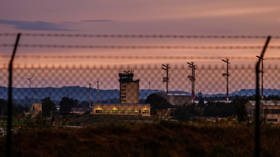Dithering while Britain burned: Lockdown delay led to UK Covid-19 death toll soaring to worst in Europe, says report
As the UK government dithered and delayed over whether to introduce lockdown measures, the number of coronavirus infections skyrocketed and set the scene for Britain to suffer Europe’s worst Covid-19 death toll.
Infections soared from 200,000 to 1.5 million in the nine days during which Boris Johnson’s government resisted introducing lockdown restrictions, new modeling from Imperial College London and Oxford University has indicated.
An investigation by the Sunday Times reports that when Prime Minister Boris Johnson held his first crisis COBRA meeting on coronavirus on March 2, there were already 11,000 infections in the UK. At the meeting, ministers were shown modeling that forecast that 250,000 people could die in the UK unless a lockdown was imposed the following day.
However, the government still had something of a ‘business as usual’ mindset, no lockdown was introduced, and the virus continued to spread in the community. Using backward-modeling, experts now calculate that by March 14 the number of infections had climbed to 200,000 and the infection rate was doubling every three days.
At this point, Johnson is said to have decided to bring in some form of lockdown but, extraordinarily, discussions about what restrictions to adopt meant the prime minister did not ask people to stay at home until nine days later on March 23. By the time the lockdown was introduced, the fresh modeling suggests that 1.5 million people had already caught the bug.
The situation was exacerbated by the fact that very few of the cases had been diagnosed because contact tracing was abandoned in mid-March as the crisis deepened. Public Health England data reveals that a mere 6,650 cases had been confirmed with tests by lockdown day.
Also on rt.com Hotly-touted Oxford coronavirus VACCINE trial has only 50 percent chance of success, project leader warnsDuring the nine-day period of deliberation, public transport and bars operated as normal and mass events continued to take place. The Cheltenham horse racing festival attracted hundreds of thousands of visitors. The study indicates that the delay may have worsened the peak of the pandemic in Britain and sowed the seeds for the UK to suffer Europe’s worst coronavirus fatality count.
“I think that critical period of delay made the big difference to the peak numbers, both of hospitalizations and of deaths,” Professor Peter Openshaw of Nervtag, the UK government’s respiratory virus threats advisory group, said to the paper.
I think everyone would accept now in retrospect that if we’d gone for lockdown a couple of weeks earlier, that would have greatly reduced the numbers of hospitalizations and deaths.
Official government stats show that the UK has the highest Covid-19 death toll in Europe with 36,675 people falling victim to the disease. Italy, which was originally the epicenter of Europe’s outbreak, has recorded 32,735 deaths, while in Spain 28,678 have lost their lives to the virus.
Like this story? Share it with a friend!














